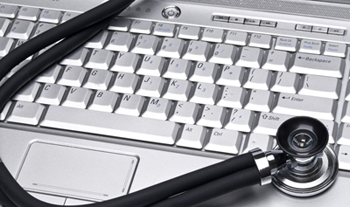Speech recognition technology (SRT) is being increasingly adopted in clinical documentation. While only a small percentage of providers use this technology in self-editing (front-end) mode, the use of back-end SRT system is growing rapidly within the healthcare field. Though many providers claim greater efficiencies with back-end system by reducing turnaround times for completing reports, they require the service of medical record editors to accomplish this. There are several challenges with this technology, especially inadvertent errors, which can be addressed effectively by blending speech recognition editing and good dictation habits.
A Reality Check on SRT
According to the E2364: Standard Guide for Speech Recognition Products in Health Care approved by the ASTM E31.22 subcommittee on Health Information Transcription and Documentation to assist those considering speech recognition technology for healthcare documentation, here are some real facts about SRT.
- Clinicians with good dictation habits are more likely to be successful in using SRT.
- Clinicians having exceptionally rough accents may find this system challenging as it may not generate texts according to what they intended while dictating.
- Depending upon the SRT context, it may not distinguish homonyms. Homonyms are words that are pronounced alike, but have different meanings (for example, Ileum (Intestine) Vs Ilium (Hip Bone)).
- SRT systems can’t overcome dictation errors, improper grammar, incomplete or disorganized dictation or wrong punctuation.
- Excessive background noise in the environment may hamper recognition accuracy. However, it may be possible to overcome this by using noise-canceling SRT microphones and proper microphone position and placement.
- Appropriate training can facilitate better results with the SRT system.
- In certain environments, SRT may not be the best method for data entry.
Speech Recognition Edition with Better Dictation Techniques
With the help of experienced speech recognition editors, clinicians can eliminate dictation errors, grammar mistakes and punctuation errors, differentiate homonyms and identify missing elements. At the same time, they can flag doubts for physicians to review. However, a highly problematic dictation often results in blanks within reports, and may require additional reviews by medical transcriptionists and editors. This will delay the report completion. Identifying errors in SRT-draft document is really challenging as it requires different eye/ear/brain coordination dynamics. A clear, concise and complete dictation can produce quality documentation. In order to get the best results from SRT technology, speech recognition editing is not enough, but better dictation habits. Some of the effective dictation techniques given in the Standard Guide are as follows.
- Identifying suitable dictation environments free from background noises, distractions, interruptions and confidentiality issues
- Providing formal orientation and training for all dictators, which should include equipment functionality, dictation processes, regulatory requirements, institutional policies and guidelines for report formats and organization of content
- Appropriate use of facility-approved abbreviations within dictated reports
- Establishing a feedback system regarding any mechanical, technical, or other problems that may hamper a clear, complete, and accurate document
Applying these techniques and ensuring proper speech recognition editing with the help of experts can significantly reduce the turnaround time for completion of reports. Partnering with a reliable medical transcription company that provides three-level quality assurance would be an effective option.


